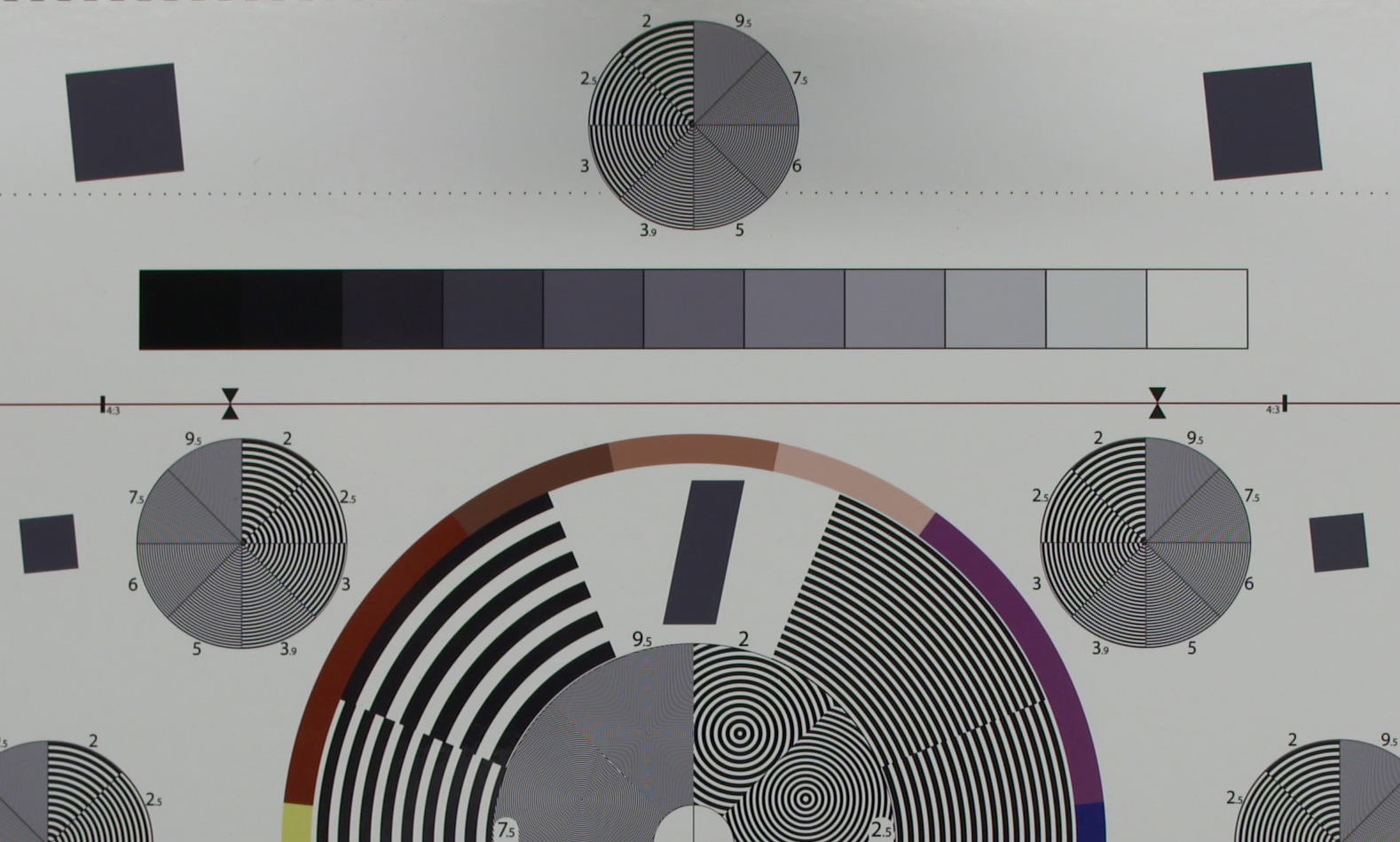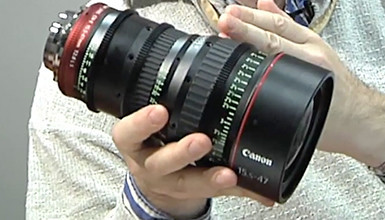Canon 15.5-47
| Zoom Factor | MSRP Price | Weight | Lens Mount | T* | Focus Rotation | Iris Blades | Front Diameter | Minimum Focus |
| 3x | $23,275 | 4.8 lbs | Canon EF / PL | T2.8 | 300° | 11 | 114mm | 1.6’ |
Canon 30-105
| Zoom Factor | MSRP Price | Weight | Lens Mount | T* | Focus Rotation | Iris Blades | Front Diameter | Minimum Focus |
| 3.5x | $23,275 | 4.8 lbs | Canon EF / PL | T2.9 | 300° | 11 | 114mm | 1.9’ |
Build and Functionality
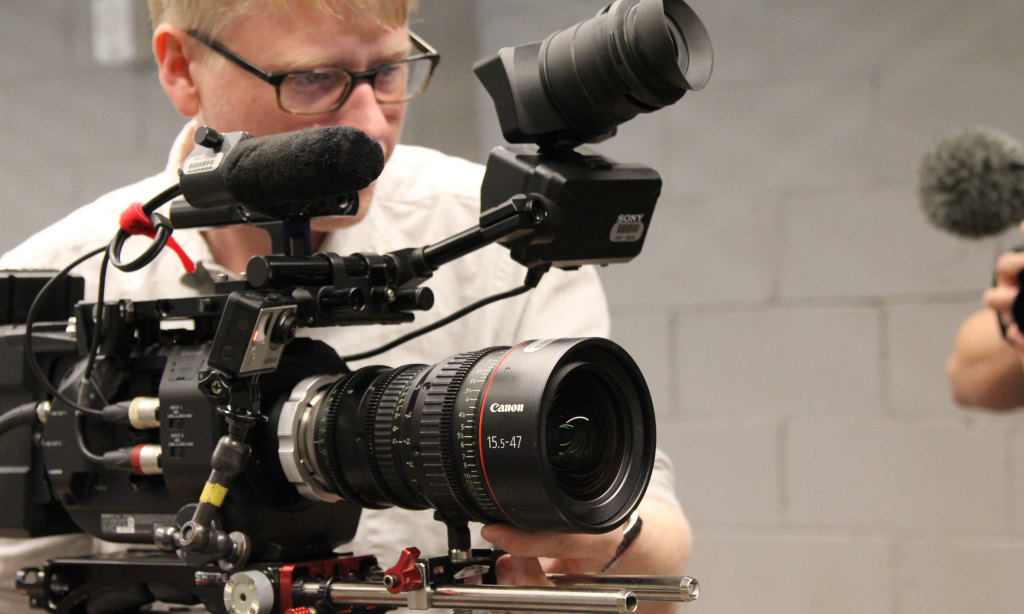
For being cinema lenses, the size and weight are well balanced for documentary production work. The all-metal build makes them incredibly solid. Each lens weighs in at 4.8 pounds, which for me, is a great space to be in. The weight helps smooth out my shots when operating, but it’s not so heavy that would make it hard to balance on my camera or kill me after a long day of shooting. The lenses are exactly the same size, and the placement of the focus, zoom and iris rings are matched, so it’s easy to swap lenses when working with a follow focus or FIZ motors. Both lenses have a 114mm front when using a mattebox.
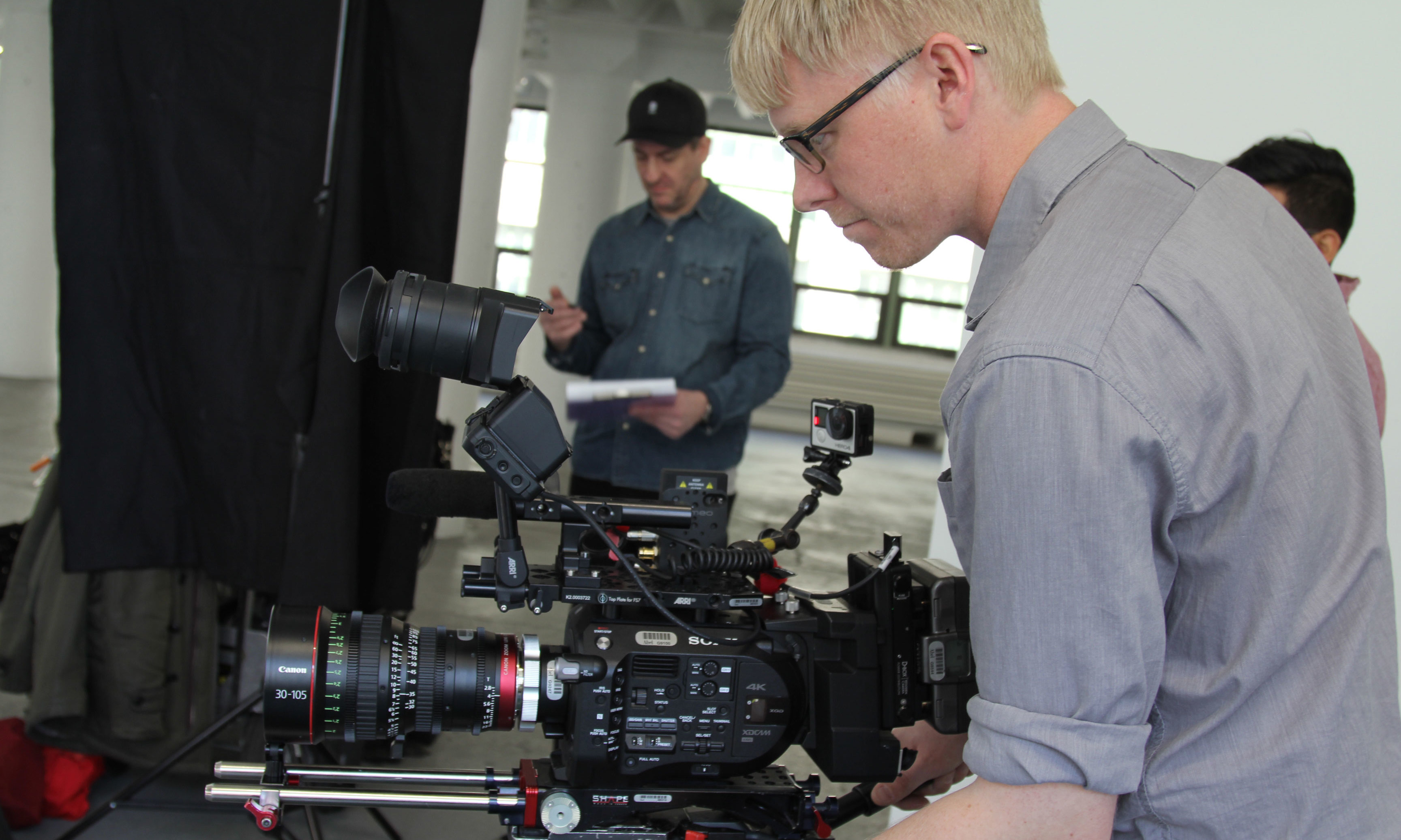
The lenses have well-dampened rings that make operation smooth and precise. There is a rubber grip on both the focus and zoom, making it easy to find and operate from. Each ring also has the standard 0.8 film pitch gears. The focus barrel has an exceptionally long focus throw of 300°, which makes for extremely precise focus, but can also be difficult to rack from minimum focus to infinity in a single rotation.
The lenses are available for purchase in either Canon EF or PL mounts, but with the variety of mount adapters available, you can easily switch between the two. To do so, you will either need to send your lens to Canon or AbelCine to have the initial switch done, and then with the Universal Mount System installed, you will be able to perform the swap yourself.
Both lenses are parfocal, allowing you to hold focus focus through the zoom range. We also tested the lenses to see if there is any center axis drift when zooming, and there isn’t any with either lens.
Geometry
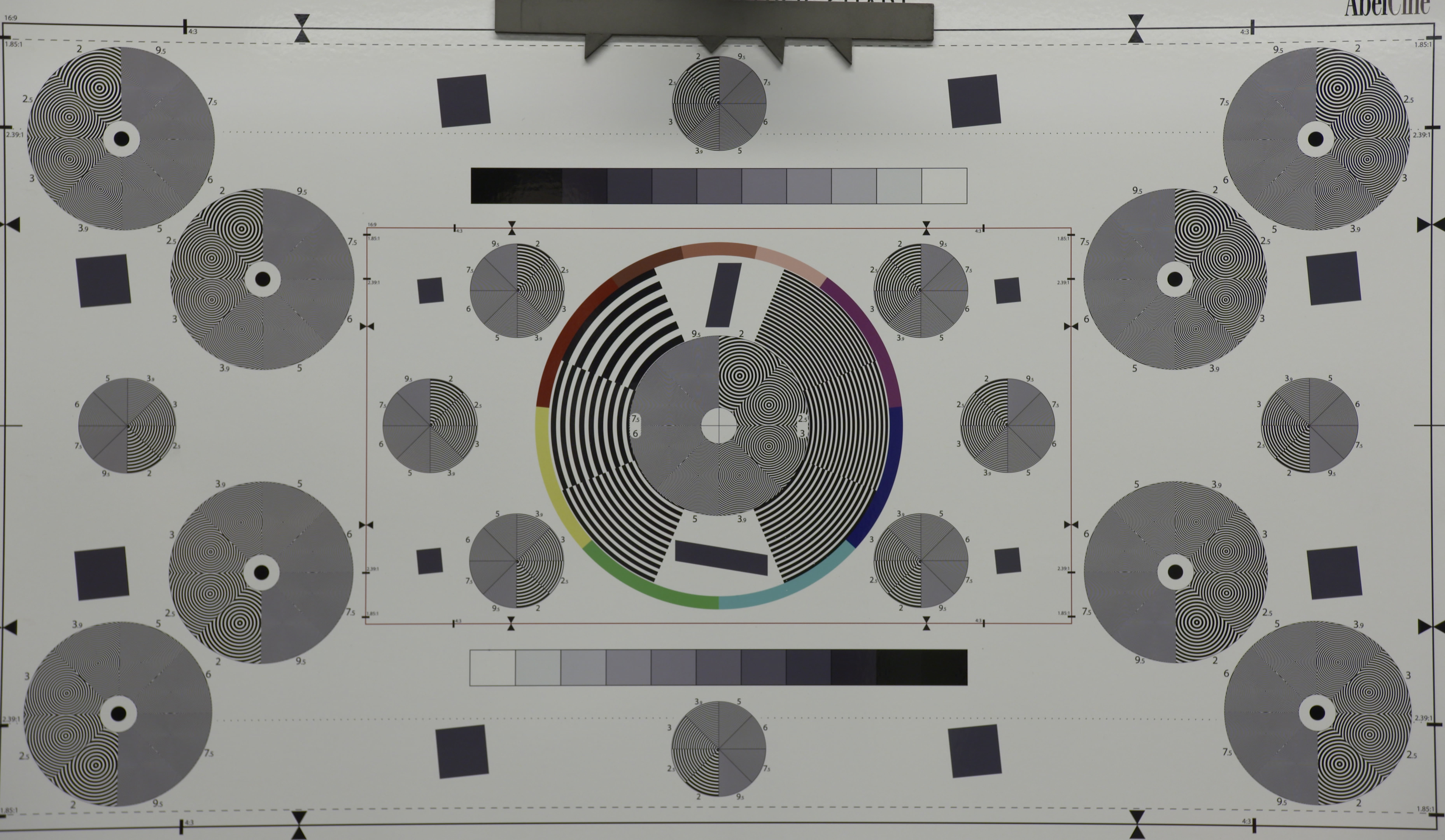
We filmed a resolution chart at 35mm with both lenses to test for barrel distortion or impact on the geometry of the image. The 15.5-47 has the slightest pincushion effect that is equal both vertically and horizontally. Even at it’s widest at 15.5mm, there is very little distortion. The 30-105, on the other hand, has near-perfect geometry, with only the slightest barreling. Click the following to see larger versions: 15.5-47 chart at 35mm, 15.5-47 at 15mm in the interview frame, 30-105 chart at 35mm.
Edge Brightness
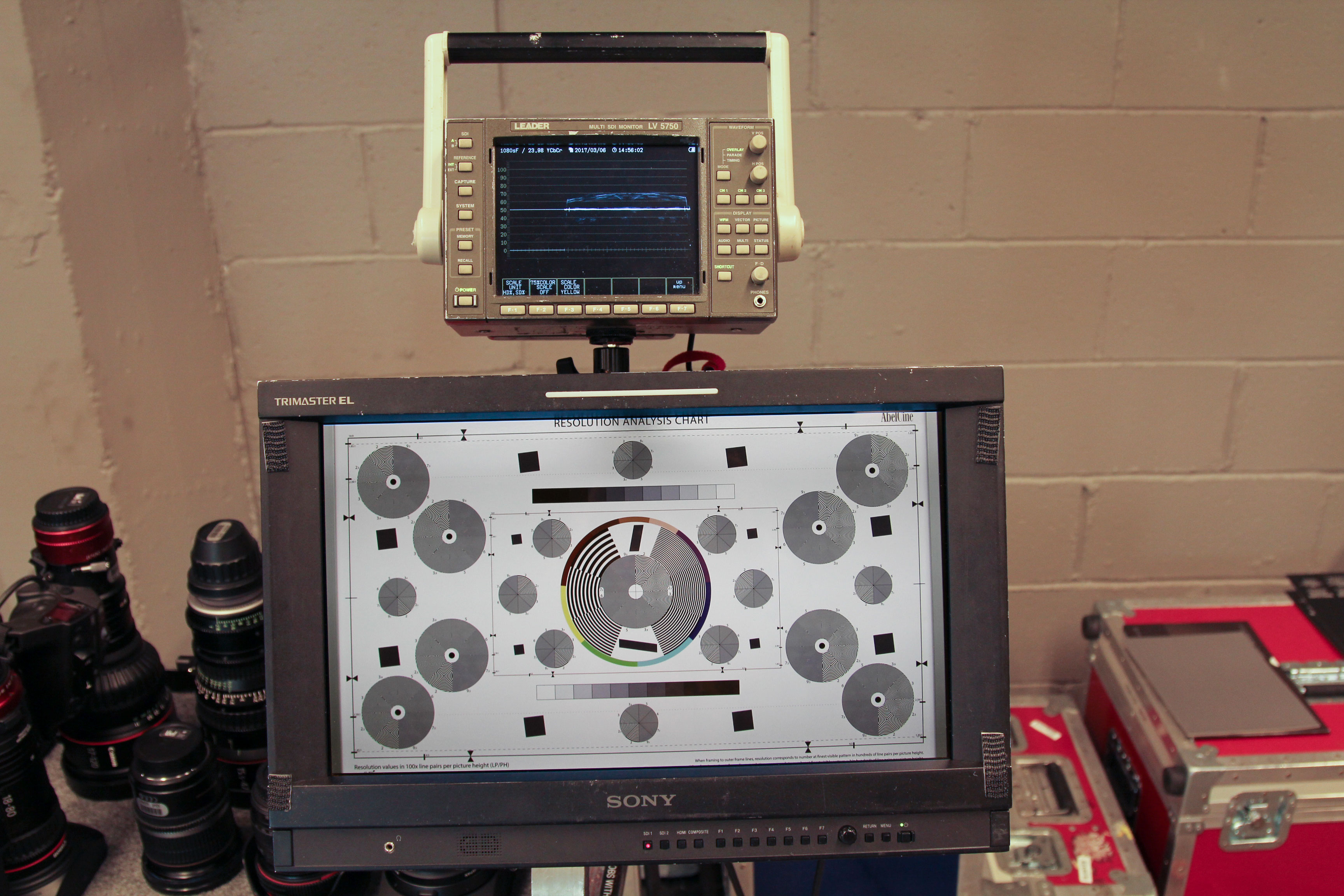
With the resolution chart, we can also test the lens for edge brightness, or to see if there is any falloff on the edges. The 15.5-47 has noticeable brightness falloff at T2.8. It is much better at T4, and then clean by T5.6. The 30-105 has the slightest amount of falloff wide open at T2.8, but then is perfectly clean with no discernible falloff at T4 and above. Click here to download screen captures of all T-stops.
Sharpness
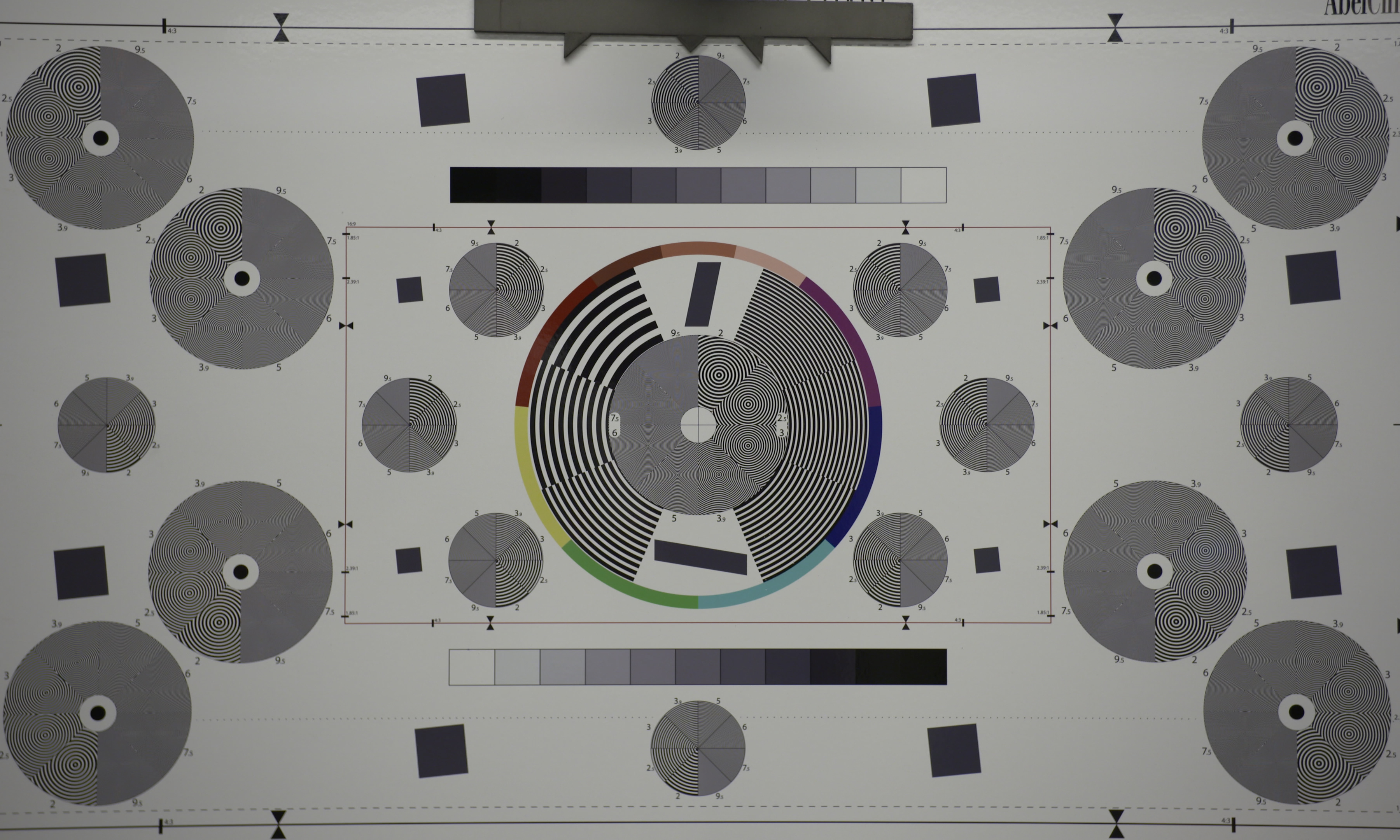
The pair of compact zooms are incredibly sharp. There is no perceivable sharpness falloff on the outer edges and any T-stop. Wide open at T2.8, the lenses are very sharp, which is only enhanced when paired with the beautiful depth of field falloff. When your subject is in focus, you can really tell! By T4, the lenses achieve their maximum sharpness and continue to hold through the rest of the aperture range. Download full resolution screen captures of all T-stops here.
Chromatic Aberration
We tested for chromatic aberration by once again using the resolution chart. Take a look at the off-kilter boxes in the upper corners. The 15.5-47 is very clean, with no discernible coloring around the edges of the box. The 30-105, on the other hand, has some obvious green fringing on the top and right, and red fringing on the left and bottom.
To see this in a real-world scenario, let’s look at the interview frame in detail. When focused to the windows (and zoomed in to 300%), you see there is next to no fringing on the 15.5-47, as we saw in the chart. But with the 30-105, the green fringing is quite apparent in the windows.
Color
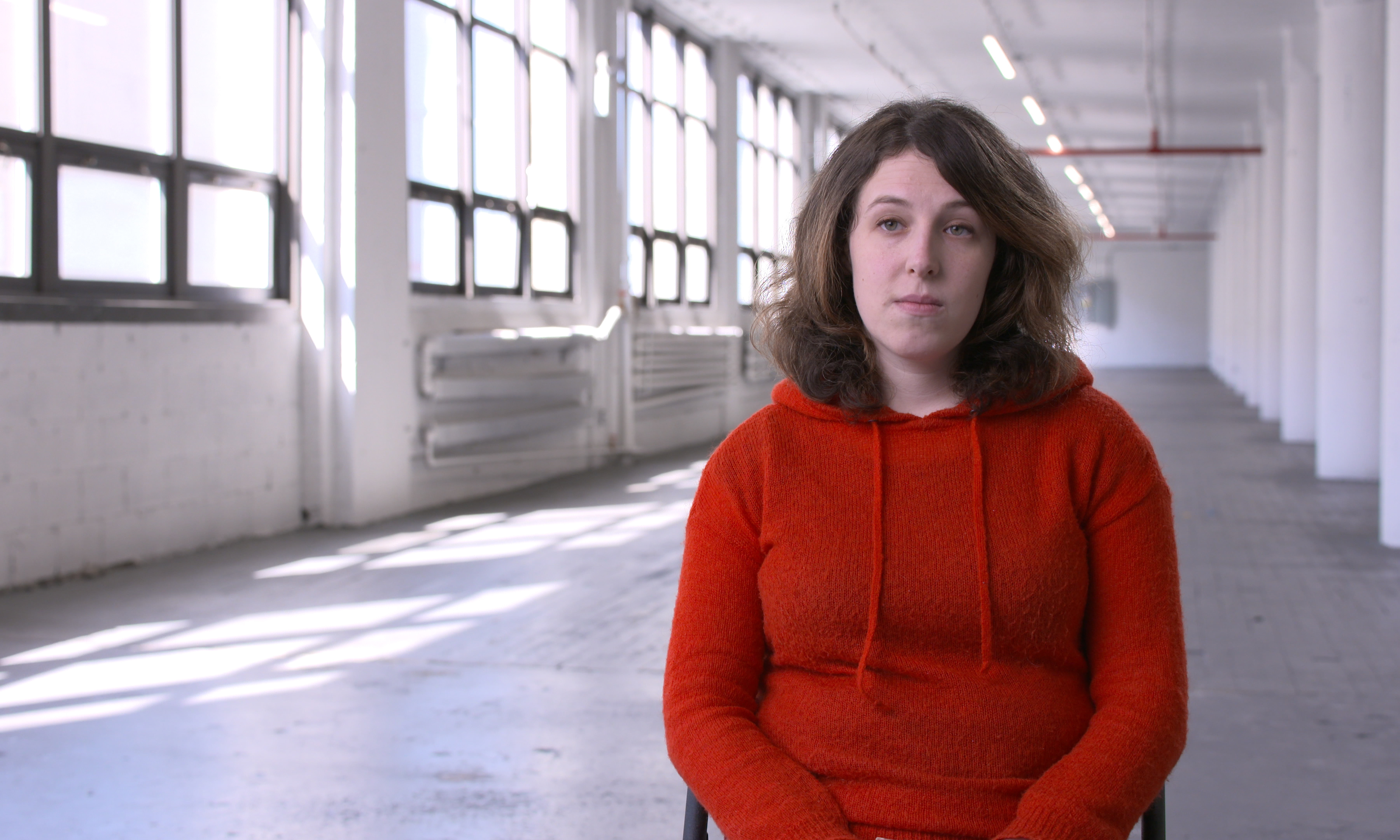
The color profile of both the 15.5-47 and 30-105 are precision matched, so they will intercut seamlessly. This is incredibly helpful, given that they are used in conjunction a large majority of the time. They are also designed to match the color on the Canon CN-E Cine Primes, but that hasn’t been confirmed in this series of tests.
To test the color of the lens, I first white balanced the camera without a lens attached. This read the ambient light hitting the sensor to give us a clean, pure white. From there, I mounted each lens and filmed a white chart. When reading the RGB waveform and vectorscope, you can see the color properties of the lens. Both lenses are fairly neutral in color overall, but add a touch of warmth specifically to the skin tones.
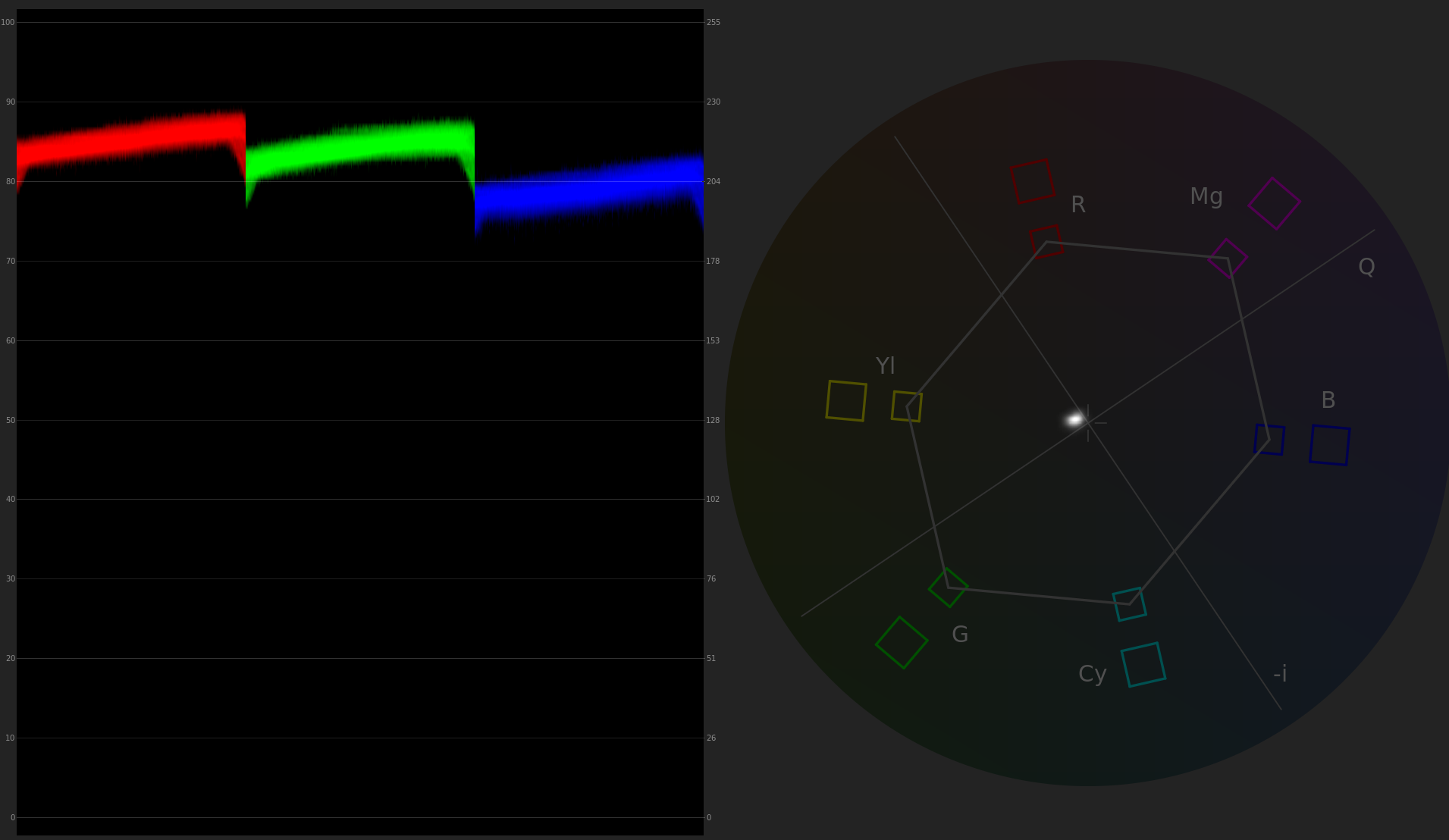
In the interview frame, you can see that both lenses have nice, solid contrast that yield a crisp, sharp image. Download the larger detailed examples here.
Breathing
We tested the lens for breathing in two different setups. The first is in the interview setup at 35mm and 50mm (or 47mm on the wide lens). As I roll the focus from foreground to background, take notice of the columns on the right side of frame, or the window on the left. The 15.5-47 basically doesn’t breathe at 35mm, and at 47mm there is only the slightest amount. The 30-105 does not breathe at all at 35mm, but technically there is some breathing at 50mm. It’s a bit nitpicky though, because in my opinion it isn’t off putting in the shot.
At the pool table, we filmed J.C. taking a shot at both the wide and tight end of each lens to see if there was any breathing. You can see the same effect we found in the interview frame, but this time putting it on context to a moving scene. Here is where I would say the breathing on the 30-105 at the longer focal lengths is barely noticeable in-scene.
Minimum Focus

Both the 15.5-47 and 30-105 have impressive minimum focus distances. The 15.5-47 has a minimum focus of 1.6’ and the 30-105 is 1.9’. These have the closest minimum focus distance of any of the cinema zooms, and are shadowed only by the Canon DSLR zooms (which are not as physically long, diluting the effect). At 15.5mm, the 1.6’ distance feels incredibly close and gives you a beautiful frame. On the longer lens at 30mm, 1.9’ feels even closer to the object. The combination of these lenses will give you some impressive close-focus shots. Neither lens has macro capabilities, but they basically give it to you anyways.
Bokeh

“Bokeh” refers to the look of the out-of-focus elements within a shot. Both the 15.5-47 and 30-105 produce similar looking bokeh. You can see in both lenses that there is a slight vertical stretch to the bulbs in the dancing scenario, as well as a cat-eye effect that pinches the tops and bottoms of the bulb into a point. Both lenses have 11 iris blades, so they will yield smooth roundness to your bokeh at any aperture.
Lens Flares
Both lenses are relatively flare resistant, but do have some differing characteristics from each other. The 15.5-47 is the more resistant of the two. At the wide end of the lens, the flare trail is tight and contained. There is small, sharp pattern around the light itself, and then has a smooth gradient outwards. The flare enters and leaves frame with no fanfare – no light leaks or large orbs – just a few pin-sized color points that quickly form into the flare that holds shape throughout. The same is basically true at the tight end of the lens, except that the ring around the light becomes more pronounced (because we are zoomed in). This yields a more milky image overall. There are still minimal “light leaks” at the entrance and exit of the flare, and the trail remains small and restrained.
The 30-105 has a little more life to its flares. At the wide end, you get some colorful pops of light at the entrance of the flare into frame and the flare itself is much larger in size. The ring around the light source is larger and covers most of the frame. At the tight end of the lens, you get a lot of colorful dancing light well before the flare enters frame. But because of how tight the lens is, you don’t get much in the way of conical orbs in the flare but instead mostly just a glaze of colorful light that plays over the entire image.
Conclusion
The Canon CN-E 15.5-47 and 30-105 are wonderful lenses for high-end documentary shooting. The focal range of the 15.5-47 is ideal for vérité shooting, while the 30-105 is perfect for interviews. Both lenses offer an extremely well-built design with thoughtful features. You will be able to put these lenses through a lot in the field without causing any problems. The weight is nice for smooth shooting, as well as making it relatively easy to balance on a variety of camera sizes. The feel of the focus, zoom and iris rings are incredibly smooth with nice tension for handheld operation. The focus throw of 300° is a bit too long for my taste, but it does make for extremely precise focusing and very helpful for camera assistants when pulling focus. The rubberized ring on the focus and zoom makes it easy to find and grip the rings. The matched spacing of the focus, zoom and iris rings make for quick lens changes. The lenses are fast with a consistent T2.8 aperture and are incredibly sharp throughout the aperture range. The color matching of the two lenses is spot on, so it’s easy to intercut between the two without any shift in color or contrast. The color is pretty neutral, but adds a touch of natural warmth to the skin tones. Both lenses have an impressive minimum focus distance that basically takes the place of a macro setting. The lenses have differing flare characteristics, which makes sense given the difference in focal lengths, but is nice for options with the look.
I hope you found this lens test useful, and be sure to check out the other lenses in the Behind the Lens – A Look at Documentary Zooms series.















